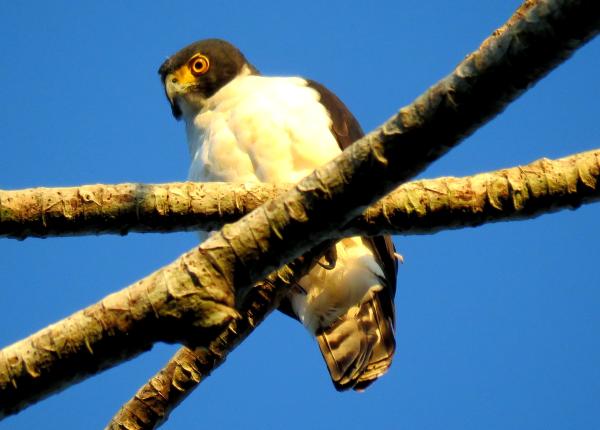How The Peregrine Fund is Helping
Though The Peregrine Fund does not work directly with Gray-bellied Hawks, our efforts in scientific research, habitat conservation, education, and community development help conserve birds of prey around the world. We also supply literature to researchers from our avian research library, which helps scientists around the world gather and share important information on raptor conservation. Our work with the Neotropical Raptor Network helps conserve raptors by fostering collaboration and communication among raptor enthusiasts in the region. And, finally, our support of the Global Raptor Information Network gives raptor researchers tools to more efficiently conduct their own studies while contributing to a global program. It also provides citizen scientists a way to participate in raptor science and conservation.
Where They Live
The Gray-bellied Hawk is a Neotropical species found in a large expanse of South America. It inhabits lowland rainforest, riparian forest borders, and isolated patches of dense woodland, and even in some recently logged forests. It can often be seen perched in the open or soaring high over the forests. This species is migratory in the southern part of its range.
Why They Need Our Help
This hawk is categorized as Near Threatened. The entire estimated population for this species is around only 1000–10,000 individuals. Its main threat, of course, is loss of habitat through deforestation.
What They Eat
There is surprisingly little information about the dietary habits of this species. However, it is believed to feed on small to large birds, such as passerines, doves, and even a tinamou. It is also been documented feeding on an armadillo. It is likely that this species doesn't catch its prey in long aerial pursuits, but rather waits on a perch in a relatively open area before giving chase.
Nests, Eggs, and Young
Most of the information we have about the nesting habits of this species are all based on information gathered from just one nest. This nest was a platform built of twigs and sticks high in the canopy. This nest contained two eggs, which were incubated solely by the female. The male, meanwhile, was responsible for bringing food to the female and the young, after hatching.
Gray-bellied Hawk and the World Center for Birds of Prey
he World Center for Birds of Prey offers fun ways to learn about birds of prey. Interactive activities, tours, interesting videos and a children's room with activities from coloring sheets to quizzes to costumes are all available for our guests. We also have knowledgeable, on-site staff to answer any questions you may have about the Black-collared Hawk or any other bird of prey.
References:
Bierregaard, R. O., D. A. Christie, and G. M. Kirwan (2020). Gray-bellied Hawk (Accipiter poliogaster), version 1.0. In Birds of the World (J. del Hoyo, A. Elliott, J. Sargatal, D. A. Christie, and E. de Juana, Editors). Cornell Lab of Ornithology, Ithaca, NY, USA. https://doi.org/10.2173/bow.gybhaw1.01









